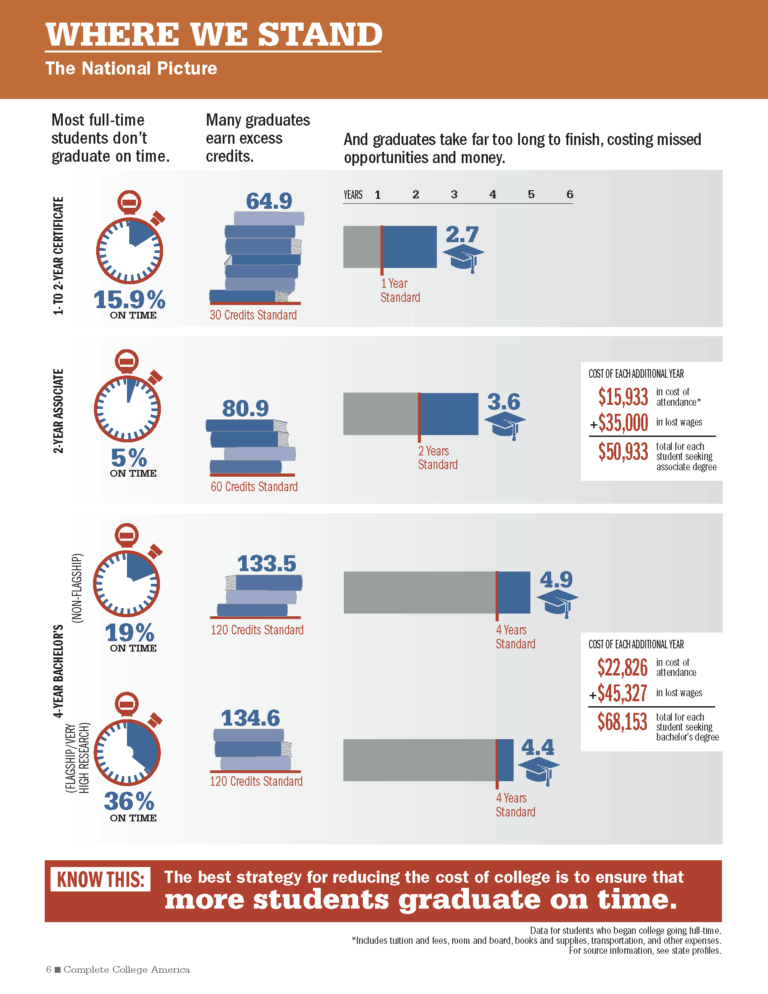Why Graduation Rates Matter
When you’re applying to college, there are many criteria you will need to consider.
- Does the school have your intended major?
- Can you afford to pay the cost to attend the college?
- Does it have the right campus vibes for you to succeed?
- What’s the overall reputation, selectivity and future outcomes of graduates from the college?
Tip: For a college to be considered a quality college, it should have at least a decent graduation rate, so keep that metric in mind as part of your deciding factor.


1. Don’t forget, colleges are supposed to ensure students graduate!
Looking at graduation rates can assist you in getting a sense of the quality of the college. These metrics give you insight into not just how many students are enrolling at that college, but also how many are finishing their degrees in a timely manner.
It is important to pay attention to how colleges support students on their campus, especially students like you. Colleges that have very low graduation rates for students of certain demographics may indicate issues such as:
- A lack of student support services or guidance, resulting in students
- taking classes that do not count towards their degree objectives
- performing poorly in classes due to mismatch with goals and academic skills
- missing opportunities, activities, and resources to help them with their classes, accessing social-emotional supports, obtaining food and housing assistance, and career planning
- A tendency to have students take more remedial courses, which can
- impact your ability to graduate on time, and/or
- pay more out of pocket than expected in the long run
When looking at the graduation rate, take into account the services and support available for you at the college. You can mitigate many of the concerns mentioned above and get support to help you to graduate on time by knowing about and taking advantage of all the resources the college has to offer.
2. Colleges graduate students at different rates
According to a study done by Complete College America
- 16% of full time students graduate on time with a two-year certificate
- 5% of full time students graduate on time with a two-year associate degree
- 19% of full time students graduate on time with a four-year bachelor’s at non-flagship colleges
- 36% of full time students graduate on time with a four-year bachelor’s degree at flagship/research colleges).
Tip: “Flagship colleges” are elite universities with a commitment to teaching top undergraduate students, providing top-level professional education and a mission of civic engagement, outreach and economic development.

It is important to know that a college’s graduation rate can be impacted by many different circumstances. For example:
- Some students need additional time to graduate due to
- changing majors
- taking time off from school
- dealing with extenuating personal circumstances
- many other factors that contribute to delayed graduation
In the end, graduating in four years* means fewer expenses and loans you will need to take on for tuition, room and board, supplies, and other fees. In addition to potentially less expenses and loans, most financial aid, such the Federal Pell Grant, SEOG, state grants, and certain Institutional grants and scholarships, are renewable for only four years. This means additional years of school will come out of your pocket. Graduating within four years also means you can get started on your career earlier and begin to build your financial wealth!
This is why it is important to pay attention to metrics like graduation rate as part of your full picture in your enrollment decision.
*Note that some programs are expected to be more than four years.
Tip: You are able to receive Pell Grant for 6 years as long as you continue to be eligible. Be aware that some rigorous programs and career paths may require more than four years, for example, engineering, law, medicine, etc.
3. Use DecidED to check each college’s graduate rate
You will see the graduate rates in DecidED as a percentage reflecting the number of students who enrolled at that college as a freshman. This percentage ultimately shows how many students graduated from that college. Usually, colleges report either a four-year or six-year graduation rate.
- In DecidED, we personalize this information for you by showing you the four year graduation rate based on the ethnicity/race you selected.
If the graduation rates at your current top choice college don’t look as good as the other options you are evaluating, then consider:
- Reaching out to the admissions office to learn more about why the graduation numbers are low. Ask what the graduation rate is for your intended major.
- Researching what supportive services and programs are available to help students like you graduate on time and if those services will be accessible to you.
- Connecting with current students and alumni from that school to learn more about their experiences.
4. Comparing one college to another
Here are some things to consider when comparing colleges:
- What percentage of students that identify the way I do (e.g. Black or African American) graduate from this college within four years, compared to other colleges?
- Is that percentage a high number or a low number for this college?
- Are you comfortable with that number?
- If you go to a college with a lower graduation rate, are there resources available there to help you graduate on time?
- Even if students don’t start or finish at a particular college, could that school still be a good option for you?
- If a school is not the right option now, could it be a good option to transfer to in the future?

5. Two more important numbers to consider: retention and persistence
We talked a lot about the importance of a college’s graduation rate, since the end goal of going to college is to leave with a degree that will help increase your future earnings and quality of life. There are two more useful numbers necessary to understand the quality of your college options:
- Retention
- “Retention rate” is the percentage of students who return to the same college for their second year
- National average retention rate is around 61.7% (2018)
- “Retention rate” is the percentage of students who return to the same college for their second year
- Persistence
- “Persistence rate” is measured by the percentage of students who return to any college for their second year (does not have to be the school they enrolled their freshman year)
- National average persistence rate is around 73.8% (2018)
- “Persistence rate” is measured by the percentage of students who return to any college for their second year (does not have to be the school they enrolled their freshman year)
Retention and persistence rates are useful metrics to consider. Examining the graduation, retention, and persistence rates from a college empowers you to understand more about the college. Ultimately you will be investing a lot of money and time to attain your college degree, so make sure you can squeeze as much as you can from this critical investment decision. A college with higher graduation and retention rates can give you some assurance that your odds of success are good!








